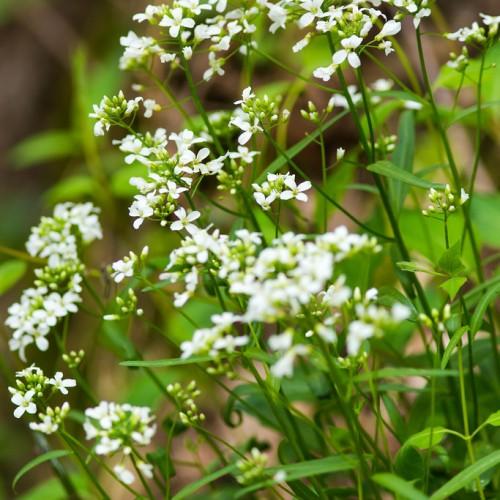
Bulbous Bitter Cress
Cardamine bulbosa
Also Known As - Spring CressWatering:
Minimal
Hardiness Zone:
Flowers:
Flowers
Sun:
full sun,part shade
Leaf:
Yes
Growth Rate:
Low
Salt Tolerant:
Yes
Invasive:
Yes
Care Level:
Medium
watering
Bulbous Bitter Cress should be watered every 2-3 days during the warmer months. During the early spring when the plant is actively growing, water should be given more frequently, every 1-2 days. In the cooler months, water only when the soil feels dry in the top inch. It is important not to overwater this plant, especially during the winter as this can lead to root rot. If the soil is left very dry for extended periods, the foliage will wilt. Once the wilting occurs, it is best to provide enough water for the soil to be evenly moist, but not soggy. Water around the base of the plant, avoid getting the foliage wet since this can lead to disease.
sunlight
Bulbous Bitter Cress (Cardamine bulbosa) prefers full sunlight for most of the day. It thrives best in full sun for at least 6 to 8 hours. During the spring and summer months the plant can take full sun throughout the day, but should be protected from the intense heat of the midday sun when temperatures are high. In the fall and winter it requires less direct sunlight and should be protected from cooler temperatures but still receive some direct sunlight.
pruning
Bulbous Bitter Cress (Cardamine bulbosa) should be pruned in late fall or early spring, depending on your climate. Light pruning in late fall is recommended to remove any dead, damaged, or diseased foliage. In early spring, you can do further pruning to tidy up the plant and to encourage new growth. For best results, prune back any foliage to a few inches above ground level. If the plant is too large or unruly, prune it back in stages over several seasons. Avoid pruning in late summer or late winter as this may disrupt blooms or new growth.
